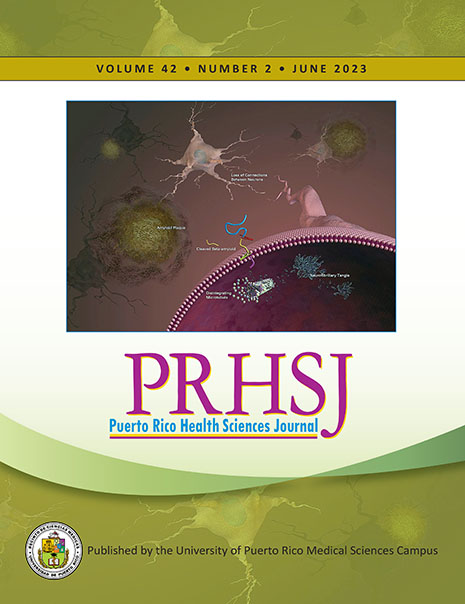Resumen
Objective: Studies addressing small and diminutive polyps and their potential of harboring advanced histologic features (AH) are scarce in Hispanics. We aimed to determine the prevalence of AH in a cohort of Hispanics. Methods: A retrospective review of medical records of patients who had a colonoscopy from 2005 through 2010. The data collected included demographics, indications, history (personal/family) of colon cancer and/or polyps, and polyp histology. Polyps with high-grade dysplasia, prominent villous component, adenocarcinoma or serrated were classified as having AH. Results: The population comprised 1884 patients, and 3835 polyps were evaluated; 63.3% were diminutive (1–5 mm), 22.7% small (6–9 mm), and 13.9% large (≥10 mm). The prevalence of AH for small and diminutive polyps were 4.9% and 1.1%, respectively. Of the polyps with AH, 11.9% were diminutive and 19.6% small. Small polyps were 5.04 times more likely to harbor AH than were diminutive polyps. Distal rather than proximal polyps were more likely to harbor AH. Furthermore, AH was >7 times more common in small (6–9 mm) polyps identified during diagnostic or surveillance colonoscopies compared to screening colonoscopies. Conclusions: The prevalence of AH was significantly associated with size, location (distal), and procedure indication. Although diminutive polyps (<6 mm) were less likely to harbor AH, the risk for non-Hispanics was higher than previously reported. The “resect and discard” strategy for polyps ≤ 1 cm should be used with caution in ethnically diverse cohorts, as the risk for AH may be higher in Hispanics than in non-Hispanic Whites.
Authors who publish with this journal agree to the following terms:
a. Authors retain copyright and grant the journal right of first publication with the work simultaneously licensed under a Creative Commons Attribution License that allows others to share the work with an acknowledgement of the work's authorship and initial publication in this journal.
b. Authors are able to enter into separate, additional contractual arrangements for the non-exclusive distribution of the journal's published version of the work (e.g., post it to an institutional repository or publish it in a book), with an acknowledgement of its initial publication in this journal.
c. Authors are permitted and encouraged to post their work online (e.g., in institutional repositories or on their website) prior to and during the submission process, as it can lead to productive exchanges, as well as earlier and greater citation of published work (See The Effect of Open Access).
